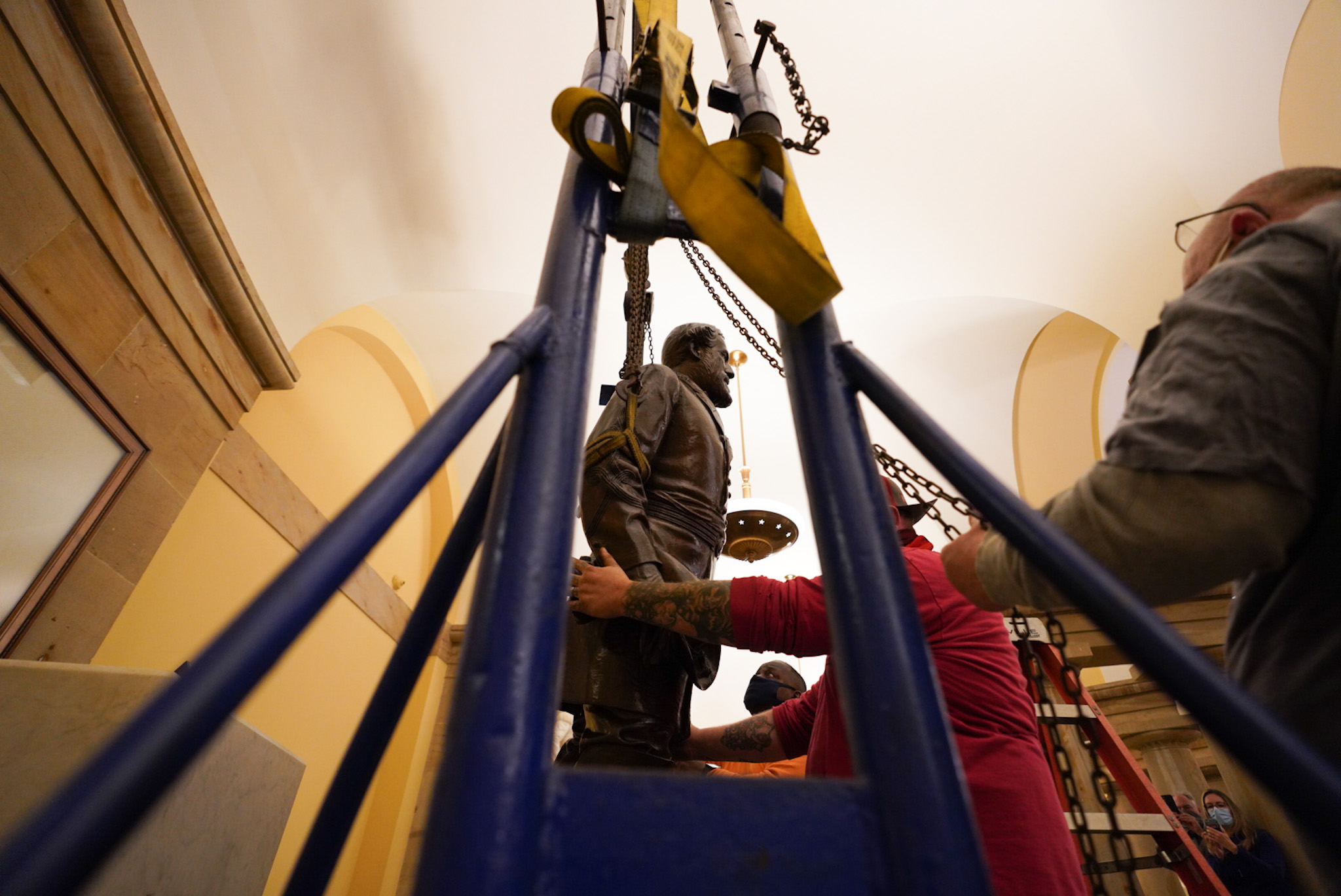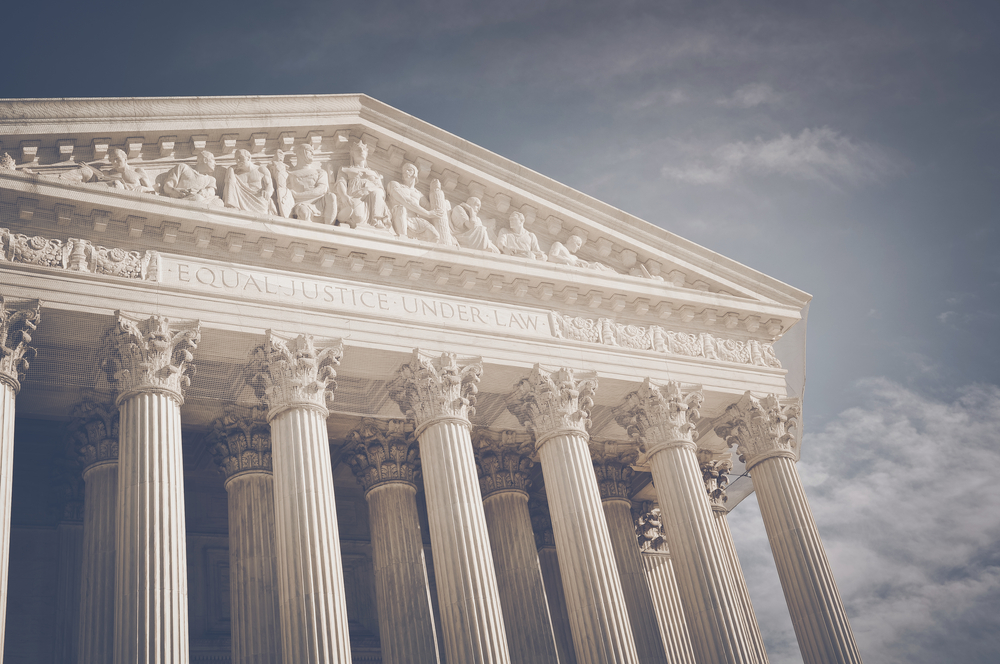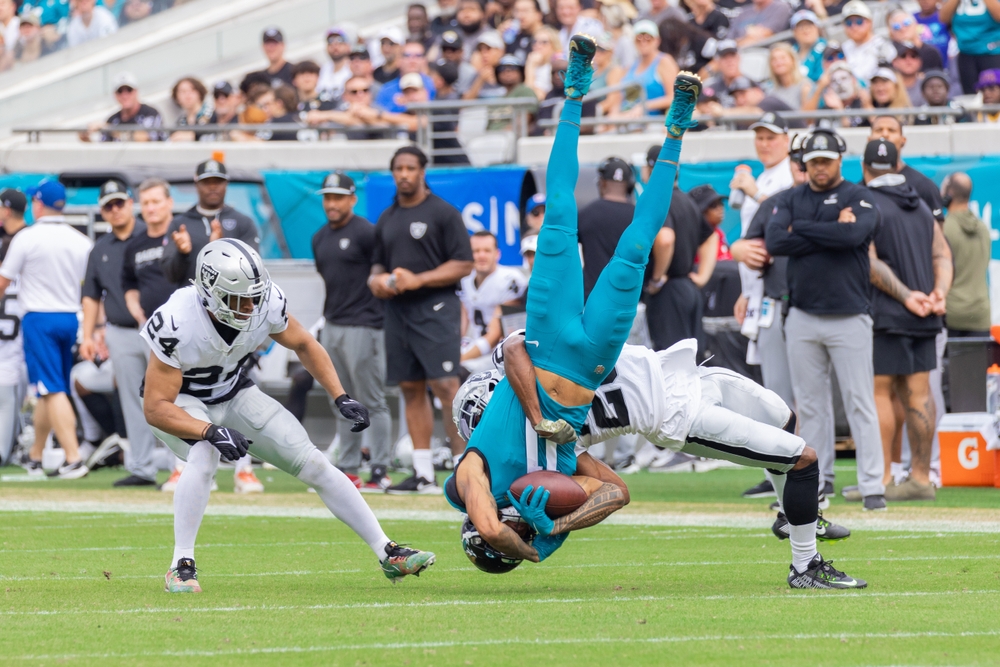Confederate statues falling since George Floyd killing
In the months that followed the police killing of George Floyd, 111 Confederate symbols and monuments were taken down and removed across the country, according to the Southern Poverty Law Center, which tracks the monuments.
In addition, over the objections of President Trump, Congress approved a provision in the defense funding bill that requires the renaming of military installations that had been named in honor of Confederate figures, said Lecia Brooks, chief of staff at the center.

RELATED: Race still a major factor in death sentences, study finds
RELATED: Protesting is your right. But that right comes with rules and risks.
The provision was part of a $740 billion spending bill that Trump vetoed, partly because of the renaming of bases. But Congress overrode the veto, allowing the renamings to proceed.
The 10 bases named after Confederates are:
- Fort Rucker, named after Edmund Rucker in 1942.
- Fort Benning, named after Henry Lewis Benning in 1918.
- Fort Gordon, named after John Brown Gordon in 1917.
- Camp Beauregard, named after Pierre Gustave Toutant-Beauregard in 1917.
- Fort Polk, named after Leonidas Polk in 1941.
- Fort Bragg, named after Braxton Bragg in 1918.
- Fort Hood, named after John Bell Hood in 1942.
- Fort A.P. Hill, named after A.P. Hill in 1941.
- Fort Lee, named after Robert E. Lee in 1917.
- Fort Pickett, named after George Pickett in 1942.
Brooks said the military change was pushed by military leaders.
“It was really a beautiful thing because this happened in the immediate aftermath of George Floyd’s murder,” she said. “The top leadership of the military came to it themselves.”
Before the renaming, military leaders took other steps. For example, the director of the Marine Corps staff instructed commanders to identify and remove displays of the Confederate battle flag, including bumper stickers, clothes, mugs, posters and other items in public and workspaces at Marine Corps installations.
Honoring Confederate leaders called “treasonous.”
“Honoring or venerating these Confederate leaders is wrong in terms of racial justice … but also treasonous,” Brooks said. She added that it “makes no sense” to name military bases after people who took up arms against the nation.
Brooks said military leaders take great pride in being out front on integration and working together and living the ideals of the country.
“They are really serious about it,” she said. “They don’t like the fact that far right extremists or white supremacists are attached to them. It’s a stain on them. It’s kind of a pride thing. They want to do the right thing.”
Of the Confederate symbols that were removed in the months following Floyd’s killing, at least 64 were monuments. That’s more than the 58 monuments removed between 2015 and 2019, according to the centers.
Weeks before Capitol invasion, Robert E. Lee monument removed
The most recent high-profile monument to be removed was a statue of Robert E. Lee, removed by Virginia from the Statuary Hall in the U.S. Capitol (photo above, from a state of Virginia news release) just days before Christmas. Governor Ralph Northam announced plans to replace the statue with one of civil rights figure Barbara Rose Johns.
Each state is permitted to display two statues in the Statuary Hall Collection and according to Northam’s office, Lee has been one of Virginia’s for 111 years, alongside George Washington.
“We should all be proud of this important step forward for our Commonwealth and our country,” Northam said in a news release. “The Confederacy is a symbol of Virginia’s racist and divisive history, and it is past time we tell our story with images of perseverance, diversity, and inclusion. I look forward to seeing a trailblazing young woman of color represent Virginia in the U.S. Capitol, where visitors will learn about Barbara Johns’ contributions to America and be empowered to create positive change in their communities just like she did.”
Johns led a student walkout at Robert Russa Moton High School in Farmville in 1951 in protest of inferior conditions at the all-Black school. Her case led to a lawsuit that became one of five considered in the landmark Brown v. Board of Education of Topeka ruling by the U.S. Supreme Court. That case declared school segregation unconstitutional.
Hundreds more monuments remain
Despite progress regarding Confederate monuments, much more remains to be done. In the center’s most recent report, it documented more than 1,700 Confederate symbols remaining across the country. Nearly 700 of them are monuments.
To understand, Brooks said, “it’s important to look at it through a historical lens and why these statues and monuments went up in the first place. Most people think they went up immediately after the Civil War to honor the war dead.”
But they were erected long after the war was over in two separate periods. The first, Brooks said, was during Reconstruction, and the monuments were “a way to reaffirm white supremacy and to remind newly freed Blacks that white supremacy still remained.”
The second was in the 1950s and 1960s at the start of the civil rights movement.
“The statues have always been about reasserting white supremacy. That’s why it’s important they be taken down.”
To those who say removing the monuments is erasing history, Brooks said, “We’re asking people to contextualize history and not venerate people who fought for the continued enslavement of African-Americans.”
The statues were erected in front of courthouses and in public squares “very intentionally to intimidate and terrorize,” Brooks added. Removing them “corrects that wrong and brings us more toward a reconciliation of sorts. At least, it’s been a first-step acknowledgement.”
Contact Elaine Silvestrini at Elaine@legalexaminer.com. Follow her on Twitter at @WriterElaineS.



















